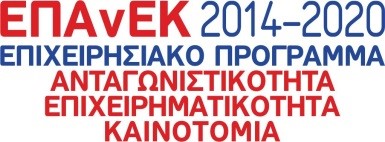1.DEVELOPMENT OF technology transfer structures in Greece (Technology transfer Offices)
Technology Transfer is the universally used term to describe the set of processes implemented by research-conducting organizations in order to transfer results of their research to another organization (public or private) that will seek to further develop these results in order to create new innovative products and services in the interest of both the economy and society.
Technology Transfer requires development of two main types of activities related to:
- a) Intellectual Property protection
This type of activities requires a very good knowledge of the processes to be followed and preconditions to be met for obtaining and managing the different types of intellectual property (patent, industrial design, utility model, trademark, copyright, etc.). For successful patent acquisition, each Research Organization must apply clear policies on the Inventor-Organization relationship, the financing of the process, the ownership status of the invention, the distribution of any financial results from the uptake and the procedures to be followed by the Organization in order to implement such project in the best possible way, always with a view to optimizing economic and social benefits without ignoring profits for the persons involved. People possessing relevant know-how as well as a team of specialized external collaborators are also necessary.
- b) Commercial exploitation of Research results and Intellectual Property rights held by the Research Organization
A Research Organization seeks Intellectual Property protection for its research results with a view to their commercial exploitation and not as an objective per se. Commercial exploitation of research results is achieved either through collaborations with the Industry or through licensing or transferring use of technologies developed by the Organization and properly protected. The Organization may also decide that the establishment of a spin-off company would be the best way to commercially exploit research results. To proceed with these options, the Organization must have instituted the necessary internal procedures, clearly formulated in its internal rules of operation. Special attention must be given to the management of conflicts of interest or IP licensing. Specialized personnel and access to databases, as well as specialized external associates depending on the portfolio of technologies developed by each Organization, are also necessary for this type of activities.
All the above processes are usually managed by Technology Transfer Offices, which may be either a department of a research organization or a company fully or partially owned by a research organization.
Technology Transfer is one of the weakest links in the Greek innovation ecosystem. Despite the fact that most of the research conducted in Greece is carried out in public research bodies (Higher Education Institutions and Research Centres), most of these entities have not yet established structured mechanisms for commercial exploitation of research results. Technology Transfer Offices operate in a few Research Organizations, while other Organizations lack sufficient specialized personnel given their size or specialization. Furthermore, the effectiveness and financial viability of a Technology Transfer Office require a critical research mass which is not evident for all Organizations.
In the past Technology Transfer was financed by the GSRI-managed “Intermediary Offices” Action. However, its results were rather poor in terms of both Technology Transfer indicators (technology registrations, submission of patent applications, licensing agreements, establishment of spin-offs) and infrastructures and know-how within Research Organizations.
To address these shortcomings, the GSRI commissioned expert surveys by internationally renowned and experienced scientists in order to assess the current situation regarding the technology transfer system In Greece and initiate appropriate actions for the establishment and operation of effective technology transfer mechanisms in Greek research bodies.
These surveys resulted in the initiation of an Action aimed at the maturity and operation of Technology Transfer structures in Greece, implemented by the Managing Authority of EPAnEK and comprising two axes:
2.AXIS A: MATURITY OF THE TECHNOLOGY TRANSFER ECOSYSTEM IN GREECE
It is addressed to:
- Higher Education Institutions (HEIs) in which a Technology Transfer Office has not been operated for more than a year or/and which have not instituted approved procedures and policies for the management of Technology Transfer activities;
- University Research Institutes (URIs) under Article 17 of Law 2083/1992 (Α΄159) and Article 11 of Law 3685/2008 (Α΄ 148, as modified and in force, in which a Technology Transfer Office has not been operated for more than a year or/and which have not instituted approved procedures and policies for the management of Technology Transfer activities;
- Research Bodies under Article 13Α of Law 4310/2014, except for Section B, in which a Technology Transfer Office has not been operated for more than a year or/and which have not instituted approved procedures and policies for the management of Technology Transfer activities.
3.AXIS B: FINANCING OF TECHNOLOGY TRANSFER STRUCTUREs OPERATION AND ACTION IMPLEMENTATION
It is addressed to:
Higher Education Institutions, individually or in collaboration with other HEIs and/or research bodies, eligible beneficiaries of calls launched under the Action, and Research bodies under Article 13Α of Law 4310/2014, except for Section B, for submission of project proposals, under the “Competitiveness, Entrepreneurship and Innovation” Operational Programme.

















